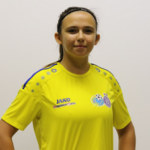
ACL injury refers to the tearing or rupturing of the Anterior Cruciate Ligament, a key ligament in the knee, leading to severe pain and a lengthy recovery process.

Sam Kerr, Leah Williamson, Beth Mead, Vivianne Miedema, and our own Laura Wienroither. These talented, powerful women are in the latest headlines for being the highest performers in the highest competitions, being role models for so many young women across the globe, fighting for the women’s game to be recognised for its worth, and having suffered from one of the most serious injuries in the game – an ACL tear. The numerous injury announcements have caused renewed concerns and resurrection of old myths.
ACL stands for Anterior Cruciate Ligament and is found within our knees. The ligament is short, thick, and powerful and is attached to our thigh bone and our shin bone. When it tears or ruptures it can cause some awful pain and a devastating injury for all.
Recovering from an ACL injury takes around 9 to 12 months, and it includes undergoing an operation, walking with crutches for several weeks, learning how to run stably and comfortably again, and months of physio exercises as well as multiple doctors’ appointments. As Arsenal players, Mead and Miedema, portray in their recent documentary titled ‘Step by Step’, this process takes a massive toll on your mental as well as physical health. Yet, it is vital as a viewer to understand that these two players have access to some of the best facilities and resources compared to most female football players in the game.
Part of being a high-performing athlete means that you are going to be at risk of getting injured. Sadly, this is part of the job, and most sportspersons experience these highs and lows. Yet, having an ACL injury can change or at least have a massive impact on a career, especially without having good physical as well as mental support. According to Sky Sports, the last 18 months have shown a massive increase in around 195 elite players suffering from an ACL injury in women’s football . However, why is this especially occurring in women’s football?
Recent research shows that female football players are four to six times more likely to tear their ACLs than men. The question of why females are more suspectable to this injury is being posed a lot currently especially in England. Many believe that this development proves that women should not be playing football or at least not professionally as it indicates that the female body cannot handle the physicality of the sport. This argument is a repeat of the type of sexism we experienced during the 50-year ban of women’s football in England from 1921 to 1971 as the sport was defined as unsuitable for women by the English FA. Many other football federations followed their lead and banned women’s football in their countries. However, many scientists and researchers are proving this theory wrong and are presenting quite concerning ideas as to why this epidemic has occurred.
Football boots are one of the most important and basic needs for playing football regardless of what level. Deciding on which shoes to get is for some a very long process, especially with the range of styles, brands, and constant new models. Now imagine going into a sports shop and not finding a single boot that fits you well or is in your size and you must choose one from the limited children’s section. Many female football players buy their shoes from the children’s section or the male section - there is no female section. Studies are revealing that the lack of female-customised boots could be a reason why women are more likely to injure themselves.Yet, change is happening. IDA Sports took on an initiative a few years ago to make female football boots. Nevertheless, they are still the only solely female football boot-making company in the world.
Many have been praising the recent growing interest in the women’s game as match attendances are rising, competitions are being held in bigger stadiums and more games are being played. Yet, the intensity of the schedule, the amount of travel, and lack of rest are also putting women more at risk. FIFPro’s chief medical officer found evidence of the linkage between elite players who had played a high number of matches, had less rest periods, and more travel, consequently suffering from ACL injuries.
Not only are competitions and governing bodies not working together to protect players but as Vivianne Miedema points out in the documentary , these elite sportswomen are not used to and have not prepared to take on such a workload throughout their careers in comparison to the male athlete who received top facilities from a young age. For instance, in the past many players (and many still) are introduced to strength and conditioning training quite late. Also, many women have, and many still do, started playing adult football from the age of sixteen which also puts them at higher risk. Ten years ago, women’s football was not where it is today, and even the highest-performing athletes were not training and being prepared the same way some girls are being trained today.
However, despite the recent positive developments in gaining more access to good quality pitches, facilities, coaches, and other resources, the changes to access are still very uneven across countries but also nationally. For example, the difference in pitches in most countries between professional and semi-professional football is huge. Despite it being semi-professional football, games are being played on grass pitches with massive holes, uneven ground, or questionably small, hard artificial grass, putting players at risk.
Furthermore, the highest performing players are being treated like ‘little men’ and many areas of the female body still go under-researched or “undiscovered” such as the menstrual cycle. Female football players are being given strength and conditioning programs that would apply to a little man. The differences like different physical structure and needs are being completely ignored and taboo topics like the menstrual cycle are not being considered when thinking about how to get a player back into shape. Studies have shown that this denial of acknowledgement is another fundamental factor that is destroying women’s careers. Again, only in some of the highest leagues are medical teams adjusting players’ training schedules according to their cycle.
However, as discussed in ‘Step by Step’, the menstrual cycle is being identified as a factor, not the cause. Katrine Kryger, an expert in female biomechanics and sports equipment, believes this is critical to understand so society does not turn this into an argument against women’s football. If the injury was caused by the menstrual cycle, then men wouldn’t suffer from ACL injuries too. Yet, understanding the effects of the menstrual cycle to help players perform at their best and protect them from injuries at different points of their cycle is essential. It is part of several diverse factors that are contributing to this epidemic. Women’s football must be careful to not let topics that dictate women’s lives and purpose interfere with learning how to protect their bodies while doing what they love.
Despite there being a high number of cases in England, the rate of ACL injuries is also high in other countries. I have played football for around 13 years and have seen several cases of ACL injuries amongst girl’s and women’s football. During my 10 years playing in Vienna, I experienced multiple girls and women go through this demanding recovery process mostly by themselves. Due to girls and women’s football still developing and not all clubs having the same amount of access and resources, many must find external help including doctors and physios to get back onto the pitch. Not only does this require time and effort and can cause them a sense of exclusivity, but also not every girl or woman can financially afford to find this extra support.
Speaking from personal experience, coming back from two operations is extremely difficult and takes a lot of energy. I was fortunate enough to have the support of my family and friends as well as the chance to receive very good medical care. Yet, despite playing in the reserve team of a first-league team, I had to find medical care outside of the club. In the last few years, the game has developed greatly in Austria, but there is still so much that needs to be talked about and enforced. It is critical that support is invested equally amongst the leagues and that a girl or woman of any level can access the support she needs, especially when suffering from an ACL injury.
Medicine and sports science have mostly focused on the male body as the prototype and only recently has the female been analysed separately. Players and staff need to learn more about the female body and how to keep it at its best. We are different from men, and that’s not a bad thing. It must be normalised that we talk to our medical staff, physio, or coach about our menstrual cycle and how it affects us. People need to treat women equally to men but that also means understanding what a female football player needs. In the past, we have not been able to share what we love to do openly so we accepted the bare minimum: any shoes we could have, any pitch we could play on, and any coaching or support we could receive. But that was the past, now we demand more.
Austria has now the chance to become part of a movement towards equality between men and women by acknowledging that the women’s game needs to be seen separately from the men’s. Clubs must start to understand and talk to their female players about issues that concern them and develop training sessions that are valuable for them. With such a strong national team and so many striving, young players, Austria has the potential to be considered one of the best places to be as a female football player if we join this movement that is now being initiated in England. Learn to understand your players, treat them with respect, and give them the chance to reach their full potential with the right means. Give the next generation the best chance to have a successful and healthy career.
ACL injury refers to the tearing or rupturing of the Anterior Cruciate Ligament, a key ligament in the knee, leading to severe pain and a lengthy recovery process.
Research indicates that biomechanical and physiological factors contribute to a higher incidence of ACL injuries in women compared to men.
Recovery from an ACL injury typically takes about 9 to 12 months, including surgery, rehabilitation, and gradual return to play.
Adapting equipment like football boots, ensuring adequate rest and recovery time, and providing female-specific training and medical care can help reduce the risk of ACL injuries.